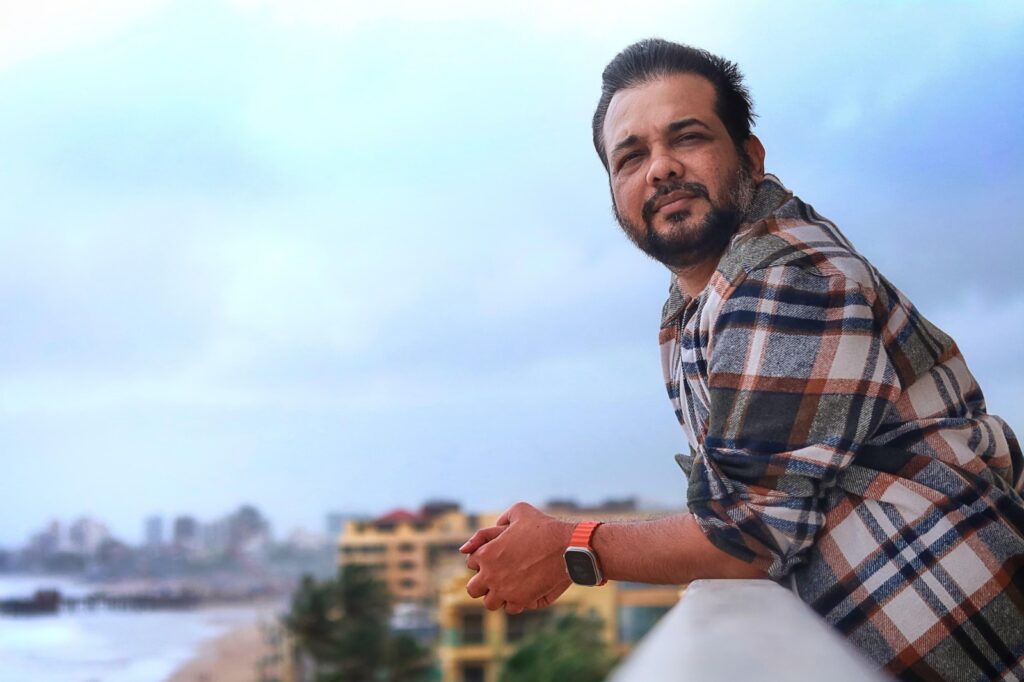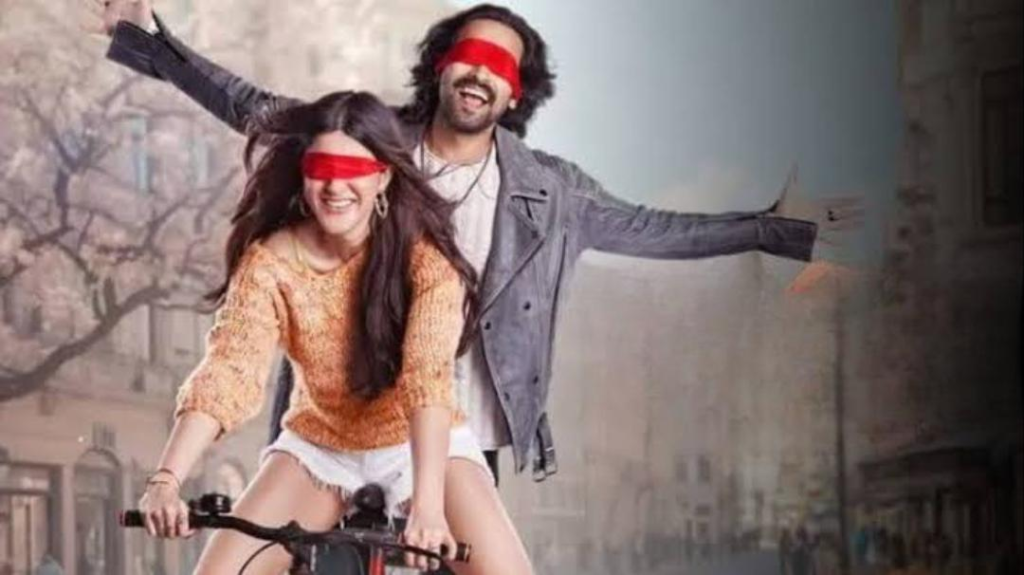Fresh off the release of his theatrical debut Aankhon Ki Gustakhiyaan, director Santosh Singh reflects on the emotional journey that led to the big screen. In an exclusive chat with The Pioneer, the filmmaker — known for web hits like Broken But Beautiful and Fitrat — opens up about crafting an old-school love story in a modern world, casting Shanaya Kapoor in her debut, and creating a film where two people fall in love without ever seeing each other
Highlighted quote: She (Saba) opens her eyes with so much excitement. She’s thinking, ‘Today I will finally see the love of my life.’ But he’s not around. That moment… Shanaya nailed it. I remember Amaal was standing next to me and crying when we shot it. The entire crew was silentz I looked at my team and realised this wasn’t just a film — it was something we had all poured our hearts into. There was a shared silence, a collective breath. I’ll never forget that

Tejal Sinha
What if love wasn’t about the eyes at all? Aankhon Ki Gustakhiyan invites audiences to experience a romance that unfolds entirely beyond sight — where connection, emotion, and soul take center stage. Director Santosh Singh, who has made a mark with emotionally gripping OTT dramas like Broken But Beautiful and Fitrat, makes his much-anticipated big-screen debut with this bold, heartfelt story. Starring newcomer Shanaya Kapoor alongside Vikrant Massey, the film explores how two people can fall in love without ever laying eyes on each other, challenging the very idea of seeing and being seen. It’s a love story painted in emotions, longing, and invisible bonds — one that lingers long after the credits roll and reminds us that the deepest connections are often felt, not seen.
“This film is about love, connection, and soul. How do you fall in love when you cannot see the person? That’s what drew me to this story. They say love is blind — but this film proves it. You don’t need to see someone to fall in love. It’s a soul-to-soul connection,” Singh shared passionately in an exclusive chat with The Pioneer.
The journey to this moment has been years in the making. Having started his career under Balaji Telefilms in the early 2000s, Singh spent nearly two decades behind the scenes. “I’ve been assisting since 2002 — it’s been over 20 years. I was quietly learning, observing, and understanding the craft. But in my head, I always believed I would tell my own stories someday.”
While the story was always close to his heart, finding the right female lead — Saba — proved to be a challenge. Singh revealed that he and the producers auditioned several actresses, but none quite fit the unique emotional tone of the character.
“We wanted someone with innocence, softness, and honesty — someone with no baggage. And we weren’t getting that. The innocence wasn’t coming through,” he explained.
That’s when fate took an unexpected turn. “One day, Amaal Mallik told me, ‘Sir, I’m not getting inspired to compose the music because I don’t know who the heroine is.’ Just casually, he said, ‘Have you seen Shanaya Kapoor?’ I was surprised because she was supposed to debut in a Dharma film. I thought it was a long shot.”
Later that night, while browsing Instagram, Singh came across a reel of Shanaya walking in a saree with the title track of Hum Dil De Chuke Sanam — “Aankhon Ki Gustakhiyan” — playing in the background.
“It felt like a sign,” he laughed. A casting director friend then shared a screen test of Shanaya, and Singh was impressed. “She looked beautiful, had a great presence, and most importantly, she could act. I called her the next day, gave her two scenes to prepare, and she just nailed it. I told her it’s a big responsibility. And she looked me in the eye and said, ‘Sir, I want to be launched in a different way.’”
The actress then went through over three months of workshops. Singh praised her dedication: “She surrendered to the process. She’s very hardworking. She listens, learns, and works with complete sincerity. That’s all I ever need from an actor. She’s going to surprise people.”
To prepare for the part, Shanaya also worked with a vision coach to understand the physicality and emotional language of someone who cannot see. Singh shared, “She spent time learning how visually impaired people navigate space, how they hold themselves, and how they express emotion. She was like a sponge — soaking in everything.”

For the role of Jahan, Singh always had Vikrant Massey in mind. The two have shared a strong creative bond since Broken But Beautiful, and their mutual trust shows in every frame.
“With Vikrant, I don’t need to explain much. He understands the character and just flows with it. We have this unspoken telepathy — he knows when I’m happy with a shot, and I know when he wants another take,” Singh smiled.
The actor-director duo would often experiment with scenes. “Sometimes, I’d tell Vikrant to do a take without direction — just feel it — and what he brought in those moments was pure magic. His growth from TV to films has been incredible.”
Singh said it was Vikrant who convinced him to shift from digital to the big screen. “He told me, ‘Santosh, you’re ready. You have to take the leap.’ His faith in me mattered a lot.”
One of Singh’s favourite scenes from the film is when Shanaya’s character, Saba, finally opens her eyes expecting to see Jahan — but he isn’t there.
“She opens her eyes with so much excitement. She’s thinking, ‘Today I will finally see the love of my life.’ But he’s not around. That moment… Shanaya nailed it. I remember Amaal was standing next to me and crying when we shot it. The entire crew was silent,” Singh recalled emotionally.
Another moment he’ll never forget is when they wrapped the final scene. “I looked at my team and realised this wasn’t just a film — it was something we had all poured our hearts into. There was a shared silence, a collective breath. I’ll never forget that.”
To ensure the film’s portrayal of blindness was respectful and accurate, Singh and his team spent considerable time at blind schools and institutes.
“They don’t want sympathy. They just want to be treated with dignity. I met a blind man who told me, ‘Sir, blind people don’t need your pity — they need respect.’ That changed everything,” he said.
What’s more, the film is also being released with an audio description feature so that blind viewers can experience it too. “I met this blind guy who read my palm and said, ‘This film will do really well.’ That stayed with me,” Singh shared. “It was such an unexpected moment, but also a strangely comforting one.”
Despite his comfort zone being OTT, Singh said he felt ready to take the plunge into theatrical filmmaking. “I don’t want to be boxed into one genre or platform. I want to keep exploring. Be it Ranneeti or Aankhon Ki Gustakhiyan, the idea is always to tell stories that move people.”
And does he think the audience is ready to embrace an old-school love story in today’s chaotic world?
“Absolutely. There’s so much negativity out there — so much hate. This film is a reminder that love still exists. That simplicity, sincerity, and kindness matter. And it’s time we brought those stories back.”
Singh isn’t done yet. While Aankhon Ki Gustakhiyan marks his theatrical debut, he’s already dreaming of what’s next. “I want to tell stories that stay with people long after they leave the theatre. If even one person walks out feeling something — then I’ve done my job.”



